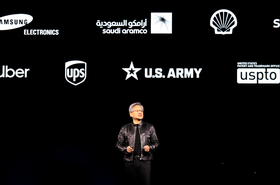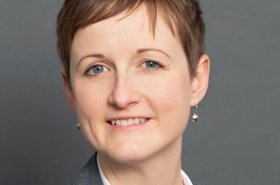The carbon capture industry is heating up, but it's still really immature. The problem is that large parts of the tech industry desperately need it to balance their carbon books - and carbon capture will require a vast amount of renewable energy, that is already needed elsewhere.
Microsoft has admitted that it can only reach its goal to be climate negative by 2030, by using carbon capture to remove carbon from the atmosphere, which will counterbalance the "Scope 3" emissions created by its Xbox sales. As a result, the hyperscaler has set up deals to buy carbon capture credits from almost every possible supplier. It is paying Climeworks to remove 10,000 tons of carbon dioxide directly from the air in Iceland, as well as a similar deal with Heirloom, and an undisclosed amount of carbon to be removed from the air by CarbonCapture in Wyoming.
In Denmark, Microsoft has signed with Ørsted and Aker Carbon Capture for BECCS (bioenergy with carbon capture and storage). It has also signed a deal with Running Tide for floating buoys which will grow biomass that will capture and sink 10,000 tons of carbon into the sea.
First of all, what is carbon capture?
Capture and storage, or direct air capture?
There are two distinct strands to the carbon removal story, usefully explained in a primer from EnergyWorld. Carbon capture and storage (CCS) has been developing for some time in the energy and heavy industry sectors. It siphons carbon dioxide out of the flues of power stations, so it can be captured and stored permanently. Direct air capture (DAC) takes a different approach, drawing CO2 out of the atmosphere, anywhere in the world, away from the sites where it is produced. Both use similar storage methods, essentially reacting the CO2 to make it inert and injecting it underground.
These methods might sound similar, but CCS is a lot easier because smoke stacks are very rich in CO2. About 12 percent of the exhaust gas from a power plant is carbon dioxide; at that concentration, it can be captured for as little as $16 to $20 per ton.
By contrast, DAC systems, such as ClimeWorks in Iceland are working with the normal atmospheric concentration of only 420 parts per million (0.042 percent), and that puts the price up to about $1,000 per ton at current prices. They also require a lot of electrical power, so they are only worth considering if that power is renewable - otherwise, the electricity could push more carbon into the atmosphere than the DAC system removes. It also makes sense only where there is surplus renewable energy - otherwise that renewable energy might be better off used by someone who is otherwise using coal.
Environmental rules muddy the waters at this point. DAC is seen as a "negative emissions" technology because it removes existing CO2 from the air, while CCS just prevents additional CO2 from entering the atmosphere.
CCS has also a tainted history, as the oil industry has historically used it to produce CO2 that can be pumped into boreholes to increase extraction - so in some cases, CCS has actually enabled more oil exploitation.
On the face of it, however, CCS looks like a better bet for investment to reduce the amount of CO2 accumulating in the air.
The amount of electricity demanded by DAC plants pushed Climeworks to locate in Iceland, which has a locally significant surplus of renewable geothermal energy - but a total amount that can't solve the CO2 problem on its own. Climeworks is currently collecting CO2 roughly equivalent to the emissions of less than 1,000 cars.
The US administration has backed CCS, with billions of pounds of tax incentives in the Inflation Reduction Act. The EU is also keen on the technology.
Where to put it?
The next thing to do is to guarantee a stable place to store the CO2 which has been captured. This requires strict regulation - and indeed it's clear that such regulations are necessary if this is going to have lasting benefits and not be a temporary greenwash story, with CO2 publicly stored, then left to leak back into the atmosphere. Some CCS companies also sell the carbon to industry, where it promptly returns to the air.
The US is experiencing a bottleneck in applications for "Class 6" certificates on injection wells, to satisfy the demands of companies like CarbonCapture.
In Europe, Denmark aims to lead the way in carbon storage, with projects already starting in which Total, Ineos, and Wintershall DEA plan to store millions of tons of CO2 in the sandstone of used North Sea oil and gas reservoirs. Other countries in Europe are expected to pump their captured carbon to Denmark for disposal.
Like the race to build nuclear plants, carbon capture is having to race to catch up with requirements. We are already well behind on our goals to reduce the carbon we are putting into the atmosphere, and it will be some time before carbon removal is mature enough to be much help with that.
For some people, carbon capture is a con, perpetrated by the oil industry, and designed to give a false hope that we can just continue burning oil forever. UN secretary-general António Guterres has said that the oil industry is touting carbon capture as an alternative to using oil, with what he describes as “proposals to become more efficient planet wreckers.”
Greenpeace founder Rex Weyler has described carbon capture as a "scam" by oil companies, designed to divert billions of pounds of money to continue a deception in which they posed as environmentally responsible organizations, while distracting public attention from the need to stop burning fossil fuels in the first place.
Some sort of carbon capture looks like evolving, and hyperscalers like Microsoft are following good instincts when they fund the technology.
But don't be fooled into thinking this will solve our problems.





